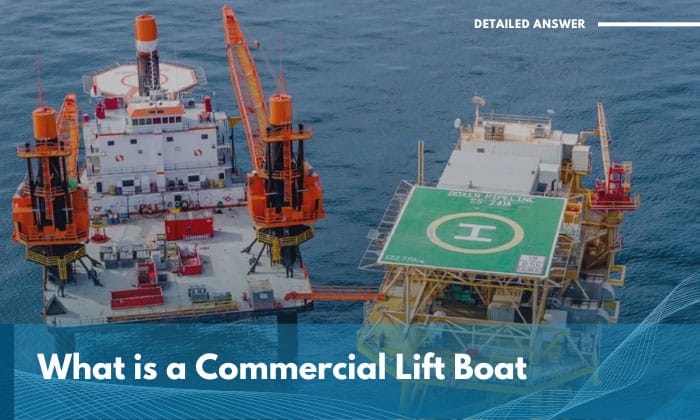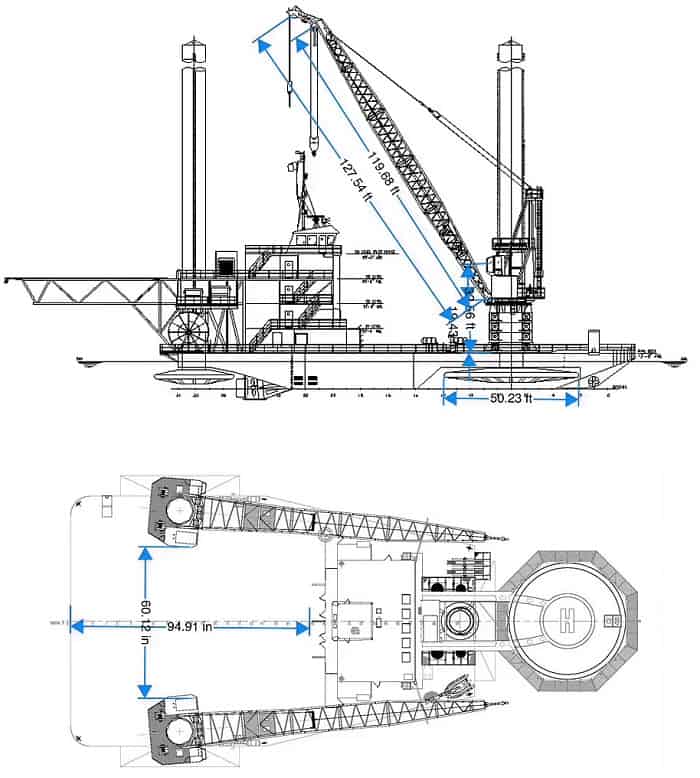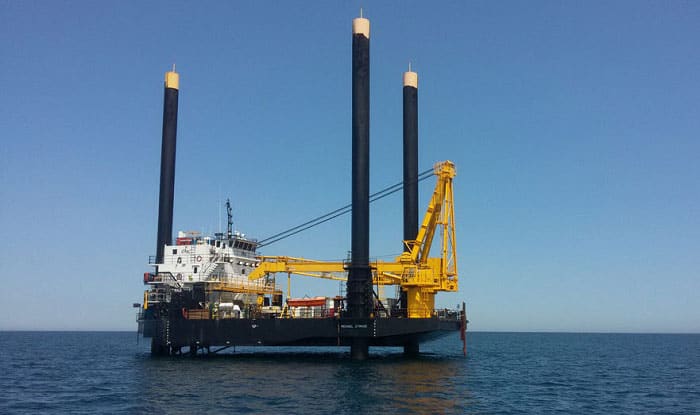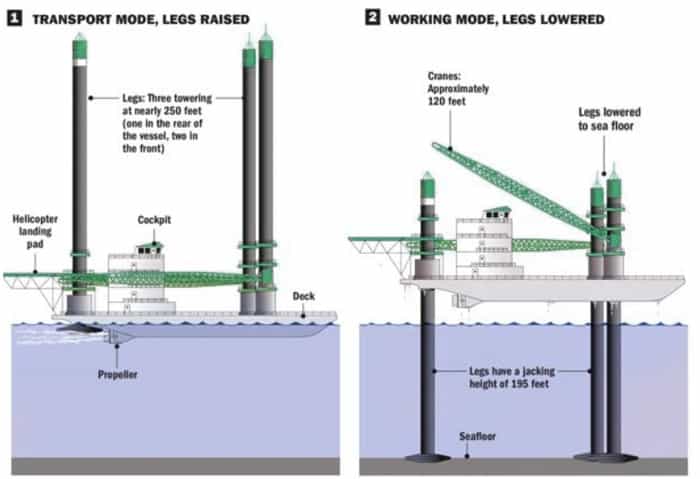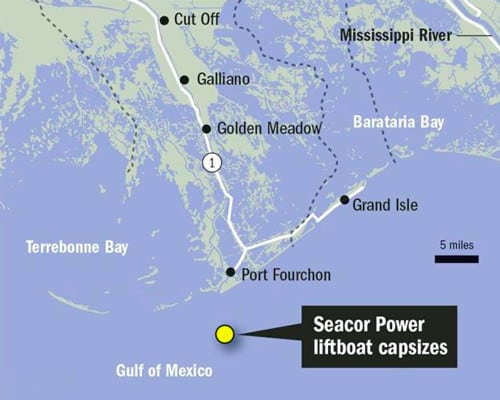Most people, even those who label themselves as boaters, don’t know what a lift boat is.
That being said, I don’t blame folks who wonder, “What is a commercial lift boat?”
For your information, a commercial lift vessel functions as a support boat deployed by companies in industries, such as construction and oil and gas exploration, among others.
They’re either three- or four-legged, self-elevating vessels that can reach the ocean floor for guaranteed stability, regardless of how shallow or deep it is.
These boats are often used for transferring crew and equipment, building oil platforms, emergency response, diving, laying pipelines, and even geological surveys.
Table of Contents
All You Need to Know About a Commercial Lift Boat
1. Definition
A typical commercial lift ship is self-propelling and self-elevating. It easily stands out with its open deck and three or four extendable jacking “legs”. It’s used for numerous offshore operations, such as the ones mentioned above.
Just because it has those supports doesn’t mean it doesn’t float on water, though. If we take a closer look at what a lift boat looks like, it still has a hull that provides the necessary buoyancy to keep it afloat.
The legs deliver the convenience of elevating the marine lift vessel just enough for it to be above the water should the conditions get rough, for instance.
2. Size
Commercial lift boats can reach (hull) sizes of up to 200 feet, and their legs can extend up to 300 feet or more. For instance, the Seacor Power lift boat that capsized in 2021 and lost 13 of its crew members was a 175 ft commercial lift boat with 265-foot-long legs.
But compared to the other 9 vessels in Seacor Marine’s current fleet, there are even larger ones, like the Falcon Diamond and Falcon Pearl, that reach 295 feet in length.
3. History
As for their origins, the general consensus is that they were invented by Orin and Lynn Dean in 1955, both of whom operated the company – Elevating Boats, LLC. Their first lift boat was called the Jehu, which was originally designed to fulfill seismographic purposes.
Parts of a Lift Boat and Their Functions
Besides the hull and legs, these are the other essential components of the vessel. Just browse for some lift boat images, and you can confirm that most of them follow a distinct design pattern. That is, as far as the integrated components are concerned.
If you’re wondering, these are the different functionalities of each component:
- Crane – used to move and haul equipment and other materials on or off the deck or to any offshore locale. Most are 127.5 feet long.
- Helipad – vital for crew and supplies transfer, especially during emergencies.
- Jacking system – basically gives control over when to raise or lower a lift vessel ship’s legs. Most vessels’ jacking systems differ in the speed in which they can perform this task, thereby serving as a good gauge of their mobility efficiency. The jacking system can be powered by an electric or hydraulic motor.
- Deck – any vessel requires an open space for working, and the lift boat is no different.
- Living quarters and accommodations – all are necessary for crew members to stay in the vessel for long periods of time while performing their duties.
- Propulsion system – lift boats typically integrate a number of bow thrusters based on their size.
How Does a Commercial Lift Boat Work?
Of course, you shouldn’t rely solely on a picture of a lift boat to know how this type of vessel works. It’s best to get the information directly from its operators. And normally, they’ll say that the vessel has two modes:
1. Transport Mode
When in this mode, the lift boat’s legs are raised to make sure that its propeller and a portion of its hull are submerged in water. As such, it can’t be differentiated that much from any ship or boat moving through the world’s waterways when it’s in this mode.
Usually, the entire length of the retractable legs will be above deck when the lift boat is underway.
2. Working Mode
Once it has reached its destination and it’s time for the crew to work, they’ll lower the legs, with enough jacking height to just reach the seafloor. Once the legs are firmly in place, the boat will no longer be affected by the usual nautical elements that affect mobility (e.g., wind and waves) and keep it stable overall.
That’s when the crew starts using the cranes, which are considered the vessel’s main tool for doing most of the commercial and industrial activities I’ve mentioned. Incidentally, those should give you the answer to “What is a commercial lift boat used for?”
Commercial Liftboat Accidents
Unfortunately, these watercrafts are not immune to capsizing, much like any boat. I’ve already mentioned one Seacor Power vessel that met this fate, but did you know that there have been other news reports of sinkings in recent years?
- For one, there was a report in December 2022 of the sinking of the lift boat, Daniela, which perished in the Gulf of Paria.
- There was another Seacor Marine accident that occurred involving the lift boat, Robert, brought about by severe weather. Thankfully, it was only evacuated and didn’t capsize.
Of course, accidents that involve crane operation and the like may not be covered by the news.
If you’re interested, here’s a picture showing the final traveling route that the infamous Seacor Power took before it capsized:
Conclusion
Now that you’ve learned the answer to “What is a commercial lift boat?”, what did you think of it? Do you consider it one of the greatest marvels of nautical engineering like I do?
I can’t name a vessel that is this versatile and functions, not unlike a Swiss Army knife, all thanks to its three (or four) nifty legs, spacious deck, massive hull, and ever-reliable crane. Mix those four with all the rest, and you get a true maritime wonder.
Read more other explanations of boats:

“My intention from the first day establishing Boating Basics Online is to provide as much help as possible for boaters who want to experience a first safe and convenient trip. So feel free to join us and share your beautiful journeys to the sea!”

